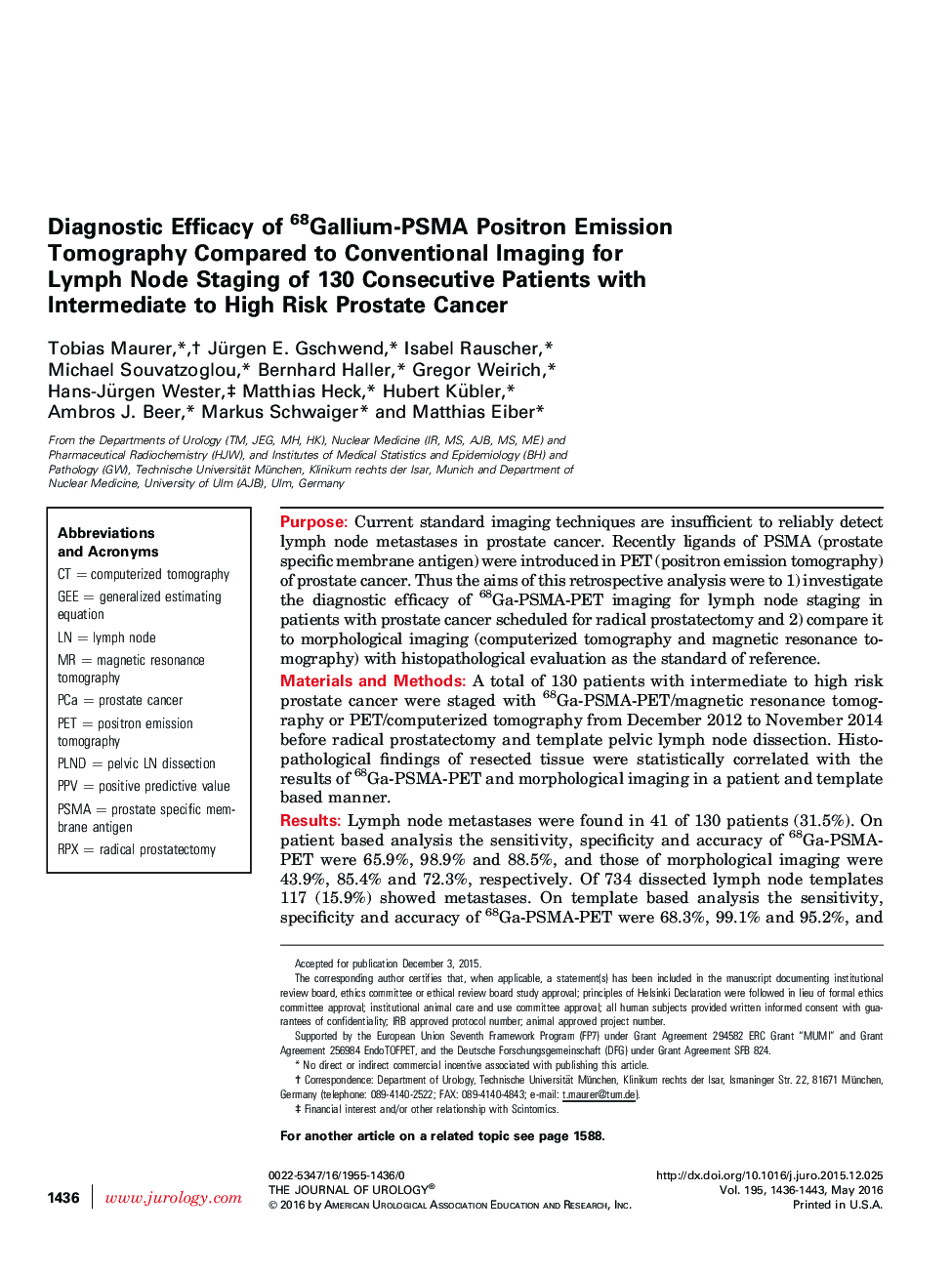| Article ID | Journal | Published Year | Pages | File Type |
|---|---|---|---|---|
| 3858961 | The Journal of Urology | 2016 | 8 Pages |
PurposeCurrent standard imaging techniques are insufficient to reliably detect lymph node metastases in prostate cancer. Recently ligands of PSMA (prostate specific membrane antigen) were introduced in PET (positron emission tomography) of prostate cancer. Thus the aims of this retrospective analysis were to 1) investigate the diagnostic efficacy of 68Ga-PSMA-PET imaging for lymph node staging in patients with prostate cancer scheduled for radical prostatectomy and 2) compare it to morphological imaging (computerized tomography and magnetic resonance tomography) with histopathological evaluation as the standard of reference.Materials and MethodsA total of 130 patients with intermediate to high risk prostate cancer were staged with 68Ga-PSMA-PET/magnetic resonance tomography or PET/computerized tomography from December 2012 to November 2014 before radical prostatectomy and template pelvic lymph node dissection. Histopathological findings of resected tissue were statistically correlated with the results of 68Ga-PSMA-PET and morphological imaging in a patient and template based manner.ResultsLymph node metastases were found in 41 of 130 patients (31.5%). On patient based analysis the sensitivity, specificity and accuracy of 68Ga-PSMA-PET were 65.9%, 98.9% and 88.5%, and those of morphological imaging were 43.9%, 85.4% and 72.3%, respectively. Of 734 dissected lymph node templates 117 (15.9%) showed metastases. On template based analysis the sensitivity, specificity and accuracy of 68Ga-PSMA-PET were 68.3%, 99.1% and 95.2%, and those of morphological imaging were 27.3%, 97.1% and 87.6%, respectively. On ROC analysis 68Ga-PSMA-PET performed significantly better than morphological imaging alone on patient and template based analyses (p = 0.002 and <0.001, respectively).ConclusionsIn patients with intermediate to high risk prostate cancer preoperative lymph node staging with 68Ga-PSMA-PET proved to be superior to standard routine imaging. Thus it has the potential to replace current standard imaging for this indication if confirmed by prospective studies.
